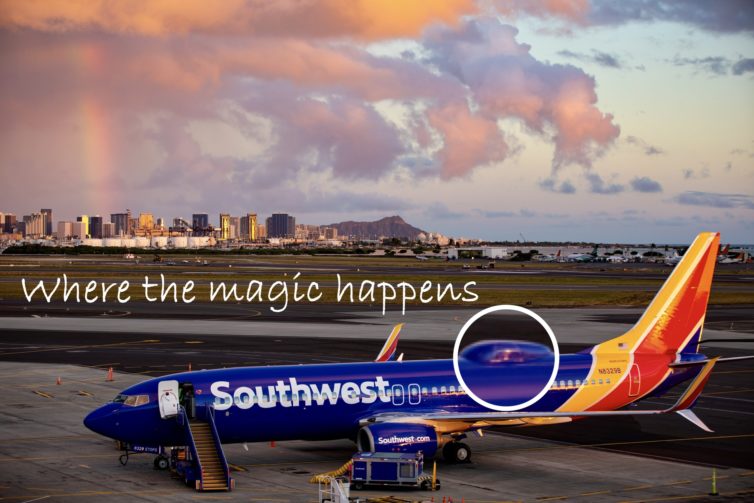
Southwest Airlines’ BYOD IFE is powered by the bump magnified above (A B738 at HNL following the airline’s first Hawaii validation flight in early 2019). – Photo: SWA Media. Edits: JL Johnson
We last looked at the Southwest Airlines BYOD in-flight entertainment (IFE) package back in 2014. At the time, the offering deserved every bit of praise given. But over the past nearly six years, the IFE space has changed a great deal. As a continued frequent Southwest Airlines flyer, when I use their IFE (and in-flight connectivity, IFC) I can’t help but cringe knowing my old review is still out there. Alas, my 2014 piece did not age well, on many fronts.
So let’s set the record straight: How have Southwest’s offerings withstood the test of time?
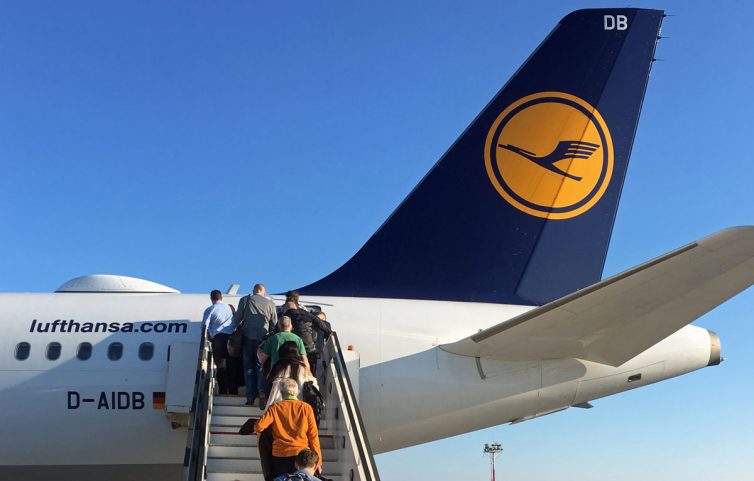
D-AIDB, one of Lufthansa’s newly-equipped IFC aircraft – Photo: JL Johnson | AirlineReporter
Here in the U.S., we have been spoiled by the ubiquity of in-flight connectivity (IFC). A few years ago the IFC saturation rate reached a level affording passengers the opportunity to adjust expectations from being a nice-to-have feature to a downright entitlement. Delta, our on-again, off-again largest domestic carrier, has long been an in-flight WiFi leader, having reached just shy of a 100% IFC-equipped fleet years ago. Thanks to early IFC pioneers like Gogo, with their ATG products, the U.S. has truly had a jump start on other markets.
Because of this, it may be surprising to our U.S. readership that IFC is not terribly common with short-to-medium-range flights in and around Europe. Lufthansa (plus subsidiaries Austrian Airlines and Eurowings) are looking to change that. In partnership with Lufthansa Technik, Honeywell Aerospace, and Inmarsat, these carriers are deploying a new IFC solution at the steady clip of eight planes per week.
I recently had the opportunity to spend some time with Lufthansa Technik to learn about Lufthansa’s new in-flight connectivity solution and even experience it first hand…
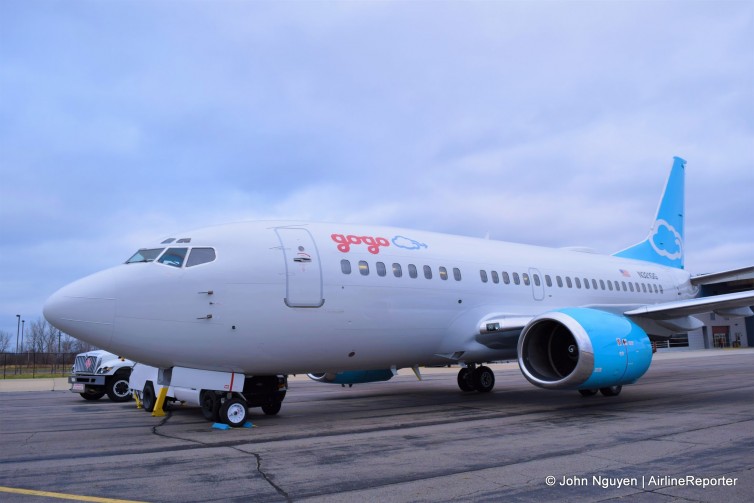
Gogo’s testbed, a Boeing 737-500 (reg. no. N321GG) dubbed the “Jimmy Ray”
You might have heard of Gogo, that company that lets you check Facebook watch Youtube be productive while you’re 30,000 feet in the air. And you might have been one of those who sighed loudly when your cat video kept pausing and buffering.
From the power user traveling for work, to the new user who will update their status to, “I’m posting this from the plane!”, most can agree that data speeds inflight are nowhere near what we’re used to on the ground. We take connectivity on land for granted, but in the air the concept is still novel and exciting (before it disappoints us multiple times with the infinite spinning “Loading…” circle).
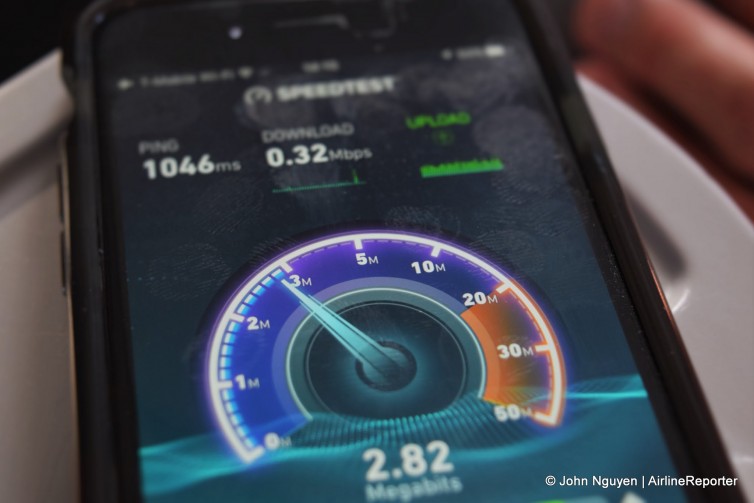
An #AvGeek testing Gogo’s speed
Gogo wants you to have really, really fast Internet, and they invited AirlineReporter to come check out their new headquarters in Chicago’s Loop, as well as to experience their test bed in action (or in #AvGeek-speak, fly on their private, tricked out Boeing 737-500). Can Internet access actually get better, and what does it mean for the regular passenger?
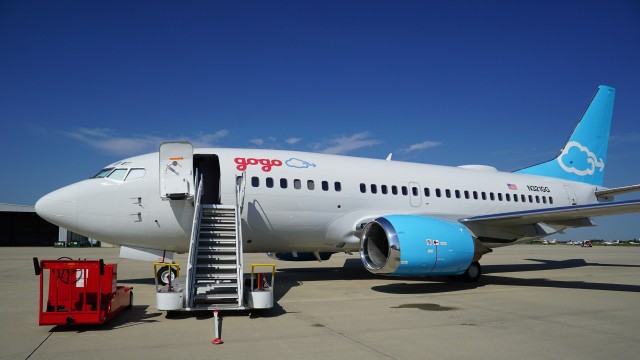
N321GG – Gogo’s 737-500 testbed – Photo: Gogo
Like most business travelers, I have grown accustomed to looking for the familiar WiFi symbol while boarding a plane. Just a few years ago, in-flight connectivity was a luxury and something one could not depend on, whether through spotty deployment across fleets, or because the cutting-edge technology delivering said connectivity wasn’t terribly reliable.
Over the years, however, following increased adoption among carriers, this luxury has morphed into something closer to a necessity. Business travelers like consistency, yet as comedian Louis CK accurately pointed out in one of his more popular skits amongst AvGeeks, we are more entitled than we should be. While I have grown increasingly dependent on connectivity, the underlying technology has always been a bit of a black box to me. You’ll be happy to know the hardware is in-fact encased in black boxes.
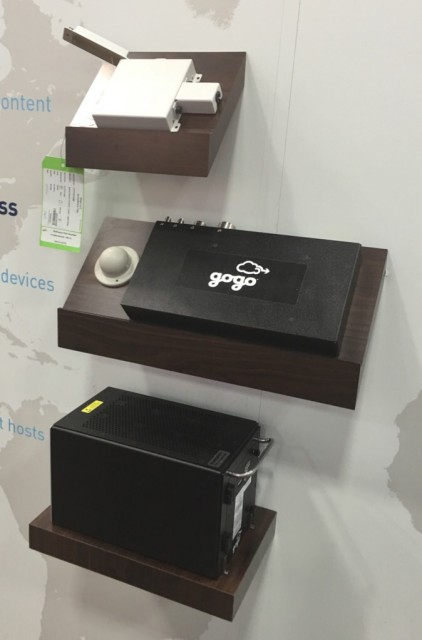
Some of the hardware required to power Gogo’s IFC and IFE systems – Photo: JL Johnson | AirlineReporter
I recently had the opportunity to catch up with the Gogo team at the Airline Passenger Experience Association (APEX) Expo in Portland to learn all about in-flight connectivity. For two days I mingled with PR folks, engineers, and even some of Gogo’s competitors in an attempt to get a solid understanding of IFC basics. Now that I have had a few days to digest the the technology and various initialisms, I’m excited to share what I learned.





